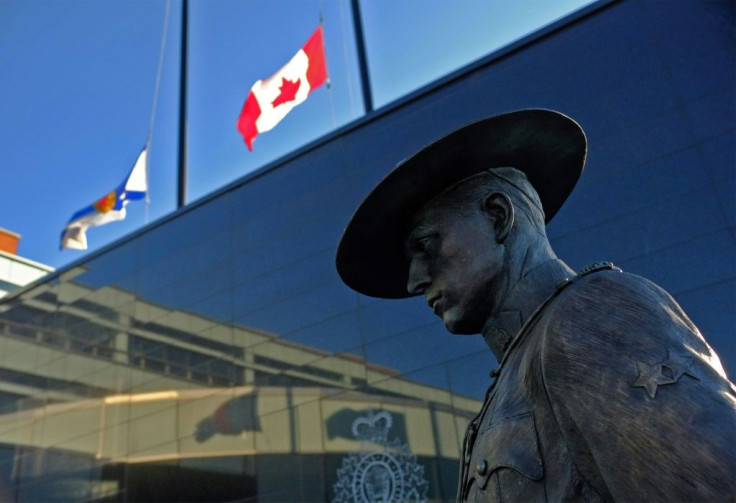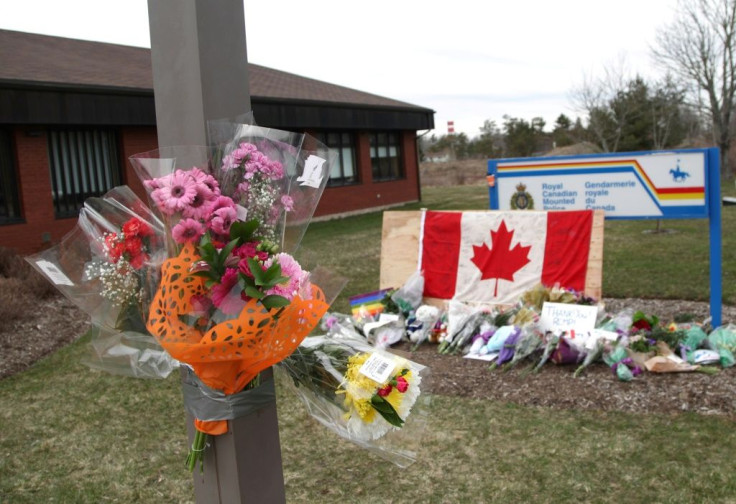Canada Shooter's Rampage Began With Assault On Girlfriend: RCMP

The worst mass shooting in Canada's history started with the suspect assaulting his girlfriend, and this may have been the "catalyst" for the 22 grisly slayings that followed, police said Friday.
Royal Canadian Mounted Police (RCMP) Superintendent Darren Campbell, at a news conference describing the 13-hour manhunt for the shooter, who also injured three people, said his motives are still under investigation.
But the suspect's beating of his girlfriend, who managed to escape and hide in nearby woods and later informed police that her attacker wore a patrolman's uniform and drove a mock squad car, "could very well have been the catalyst to start the chain of events."
"It was a significant assault," Campbell said, suggesting also that her escape may have further enraged the shooter, identified as 51-year-old denturist Gabriel Wortman.
Police previously described the girlfriend simply as "a key witness" who helped them identify the armed suspect after she emerged from hiding Sunday morning, about nine hours into the shooting and arson spree.
Thirteen victims had been identified by then in the quiet and sparsely populated Nova Scotia seaside community of Portapique where police set up a four-square-kilometre (1.5-square-mile) perimeter to try to contain the suspect.
Overnight, the shooter may have fled the dimly lit area by driving through a field or, disguised as an RCMP officer, slipped past barricades, Campbell said.
Going over the timeline, the police superintendent acknowledged a long gap after the first of three clusters of killings, which included a drive-by shooting of a woman walking on the side of the road, two motorists he'd pulled over and shot dead, and several people whose homes were set ablaze.
A total of 25 police units, including a dog team and a helicopter, had been deployed in the search of Portapique's dirt roads and brush, and a subsequent manhunt.
"I can't imagine any more horrific set of circumstances when you're trying to search for someone that looks like you," Campbell said.
This "obviously complicated things" and gave the suspect an "advantage" over police, the public and "every person that he encountered through the course of his rampage."

Surveillance videos showed Wortman had "come fairly close to some of our officers and did not engage them."
Two officers also fired shots outside a fire station where evacuees were sent, reportedly believing that the shooter posing as a policeman was inside.
Authorities noted that they had learned of three "plated" Ford Taurus cars owned by the suspect -- the same make and model as RCMP squad cars -- but were not initially aware of a fourth made to look like a squad car and driven in the attacks.
Investigators said they had uncovered where Wortman purchased the lightbar for the vehicle and where he may have sourced its decals, but did not provide further detail.
His guns, police said, were acquired in Canada and the United States.
He also took the sidearm and magazines off a veteran policewoman, Constable Heidi Stevenson, after ramming head-on into her car and shooting her dead.
Moments earlier another officer had been injured when the suspect -- who was mistaken for Stevenson -- drove up next to the officer's car and opened fire.
After those encounters, Wortman set fire to both his and Stevenson's cars and hijacked a passing SUV, drove to a nearby home and killed a woman he knew, then changed into civilian clothes.
A short time later, he was gunned down by a tactical officer who stumbled upon him at a gas station near Halifax.
"While he was at the gas pumps, one of our tactical resources came to the gas station to refuel their vehicle," Campbell said.
"When the officer exited the vehicle, there was an encounter and the gunman was shot and killed by police at 11:26 in the morning," he added.
© Copyright AFP {{Year}}. All rights reserved.





















